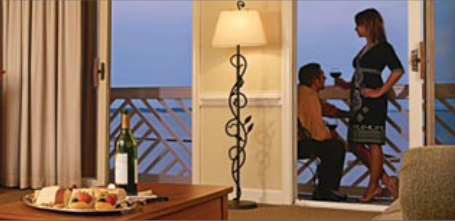|
The gynocracy
 Now advertisements are meant to make a product or service attractive to people. For example, in the New York area for the last year or more there are billboard ads for a certain 4G cellphone (I can’t remember the brand at the moment) that use a pretty, friendly brunette as the model. The brunette has nothing to do with the cellphone; she is there is give prospective customers, or least male customers, a good feeling about the cell phone, to make them want to buy it. The picture of the couple in the ad for Kingsmill Resort is more directly related to the product, but the intent is the same, to make prospective customers want to spend a weekend getaway there. But, in contrast to effect of the pretty brunette, would people really have a good feeling about a picture of a woman standing regally over a pathetic, hunched-over man? How many couples would be attracted by that image, and thus want to go to Kingsmill? Would’t even PC, liberal, feminized men and women—the Beltway lawyers and bureaucrats at whom the ad is directed—be at least subconsciously repelled? I don’t know. I ask your thoughts. Here is the full banner ad:
 Comments Michael R. writes:
Enjoy your commentary, but you may be reaching a bit on this one. Banner ads like this involve little or no thought and are typically put together from stock photos done on the cheap. In addition, females tend to be used more often and/or more prominently as their form is viewed as more pleasing to their target audience. Or it could be something as simple as the man is too short, is wearing unfashionable clothing, or has a paunch. Look to TV commercials to see the agenda-driven ads—they are everywhere!LA replies:
So agenda-driven TV ads are everywhere, but this ad is not agenda-driven, but just happens to fit the same agenda, by random accident?Bruce B. writes: “Would’t even PC, liberal, feminized men and women—Beltway lawyers and bureaucrats—be at least subconsciously repelled?”LA replies:
I’ve often remarked how, in all movies and TV shows for the last 20 or so years, the kiss is always initiated by the woman, or the woman is above the man during the kiss. With coital positions I’m not so sure. The typical pattern is that the kiss begins with the woman above the man, but as the embrace becomes more serious, the man rolls on top of the woman as the scene fades, restoring the usual sexual order once due devotions have been paid to female dominance.Bruce B. replies:
I guess I’m talking about movies and shows where the scene doesn’t fade, e.g. the movies and shows on cable channels like HBO. The type of stuff that I was (unfortunately) raised on and that most people my age were raised on—these ads are probably targeting thirtysomethings.Michael R. replies to LA:
Well, let me put it this way … a host may put a fair amount of thought and creativity into a four-course meal for dinner guests, but little to no thought to the donut or oatmeal they scarf for Monday breakfast. I honestly do not see an agenda here, and if there is one intended I can only smile at such a tepid, uninspiring effort. That banner ad will attract the attention of no one.LA replies:
I would say that the ruling ideas and motifs of a culture are expressed throughout the culture, in big, obvious ways and in little, seemingly trivial ways.Jake F. writes:
Your reader says that the image probably was chosen quickly from a stack of stock images, and he’s right. Unfortunately, his point is irrelevant. People always say, “That wasn’t the intent of the ad,” or, “You’re reading too deeply into this one,” and they’re usually missing the point.LA replies:
Of course you’re right, but it’s difficult for many people in our society to understand the point. Operating under the (usually unstated) liberal/libertarian assumption that we are all completely free actors who freely determine our own existence, they see and judge all human actions in terms of conscious, individual intent. They don’t see how our actions are influenced by and reflect the culture around us. So if a person (such as the person who chose the photo in the resort ad) didn’t consciously intend a certain result, then the result that happened was just happenstance.LA continues:
Also, I don’t think the photo is a stock image at all. The photo is clearly a planned shot—planned for this advertisement—of a hotel room with the couple on the balcony.LL, a female reader, writes:
Would Michael R. argue that this photo, which accompanied a Yahoo headline regarding an article about “love at first sight,” was chosen utterly at random, without any desire whatsoever to promote a particular agenda? (Interestingly, the article itself was illustrated with a photo of a couple who are clearly both of South Asian ancestry.)Jake F. writes:
You wrote: “Also, I don’t think the photo is a stock image at all.”LL writes:
Also, you are correct that the photo in the ad is not “swipe art.” That distinctive lamp design may be found in photos of the resort’s rooms displayed on their website.LA replies:
Of course. I think it would be awfully strange if a hotel in its advertisements used stock photos of generic hotel rooms, rather than photos of its actual rooms. After all, this is the Kingsmill Resort of Williamsburg, not the Newt Gingrich presidential campaign.February 22 Mark Eugenikos writes: I work in software marketing and get to see series of photos that are specifically developed for product marketing campaigns. They all look like ads for the United Colors of Benetton, with underperforming minorities vastly overrepresented. I find it annoying, but it’s not my company, so I choose not to get too worked up over it. Posted by Lawrence Auster at February 21, 2012 07:21 AM | Send Email entry |
